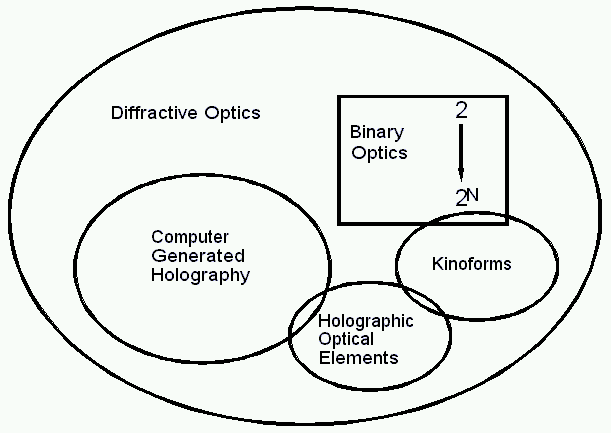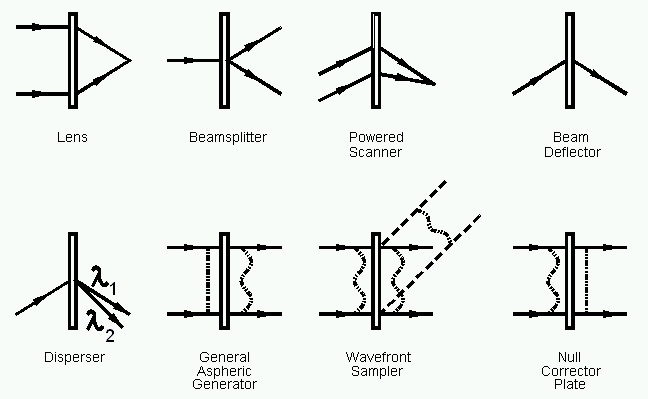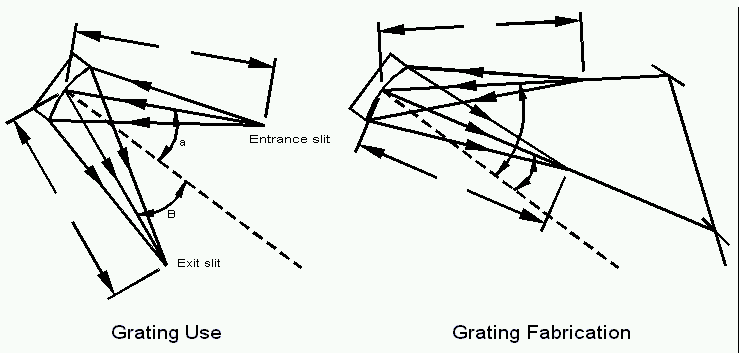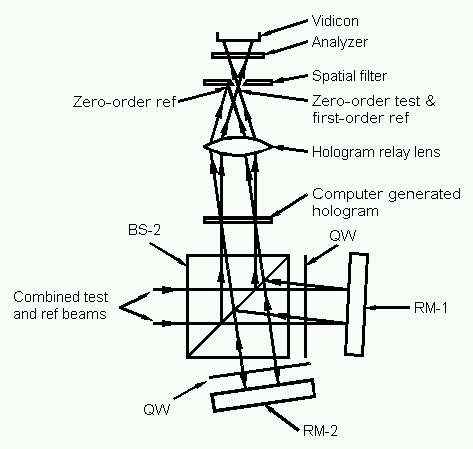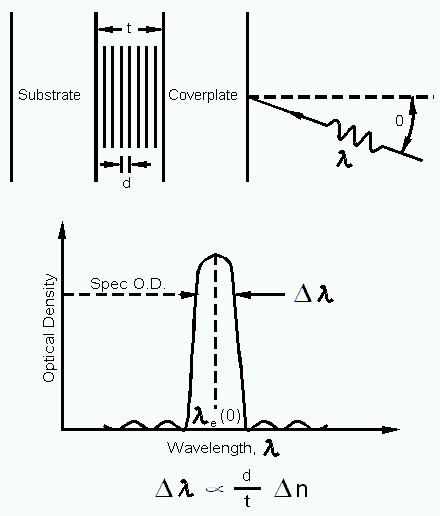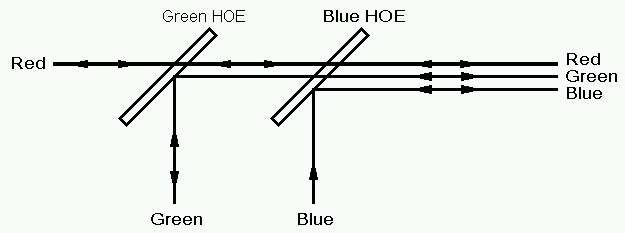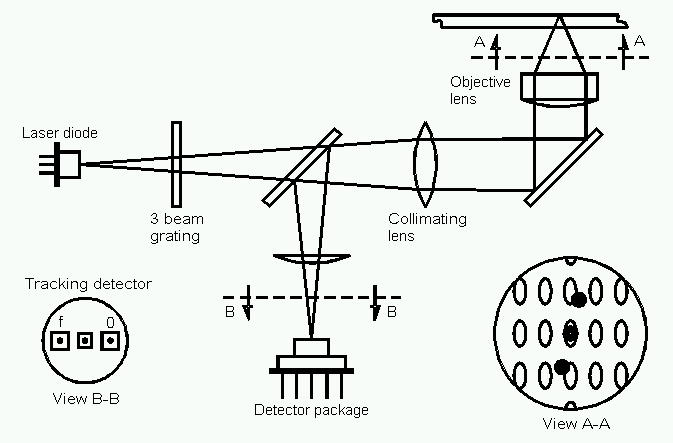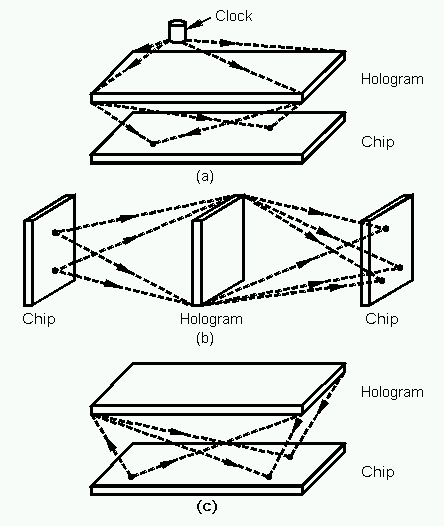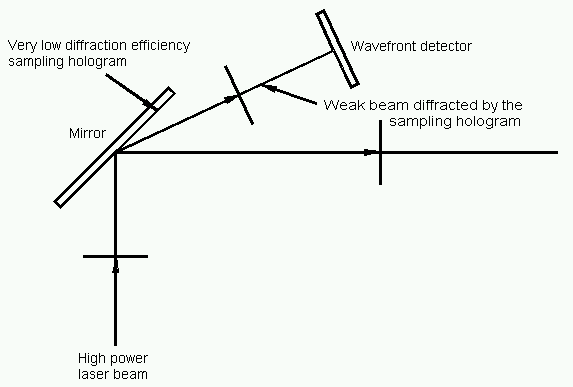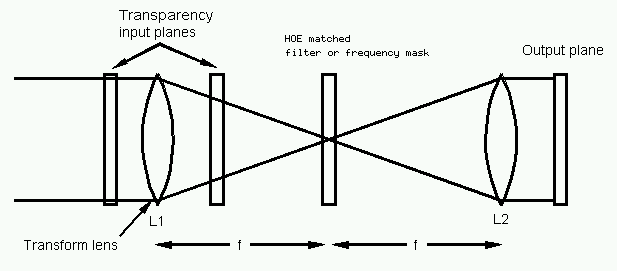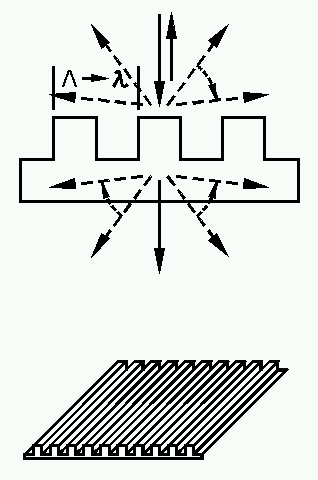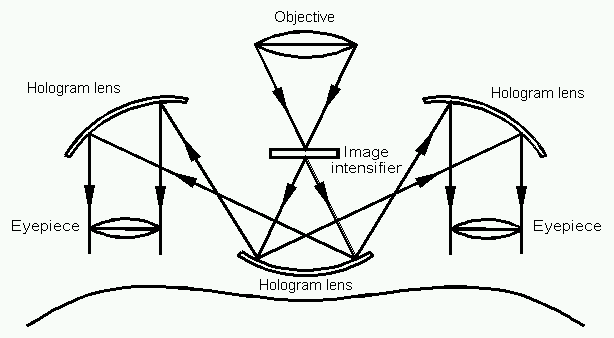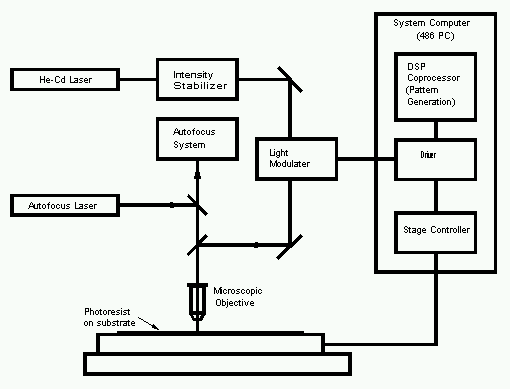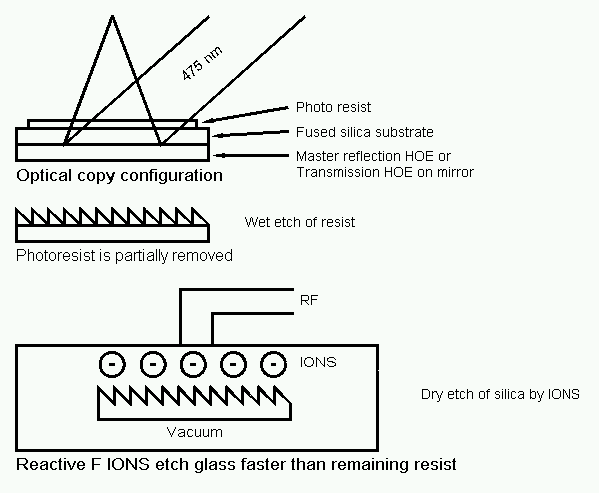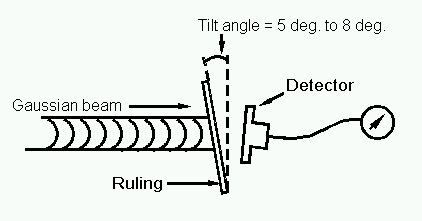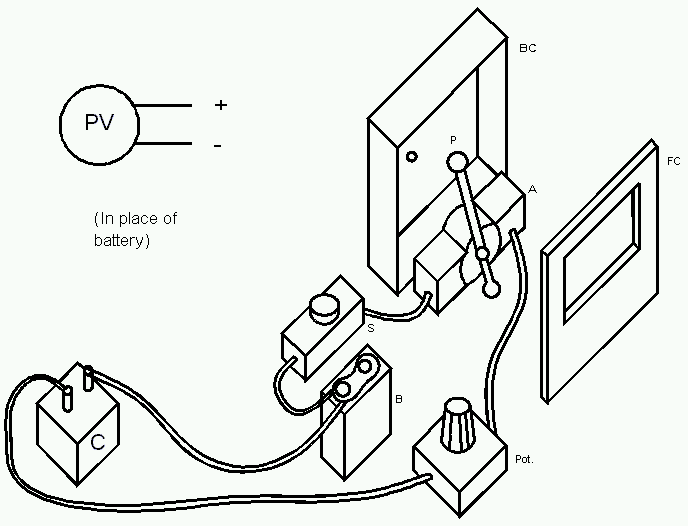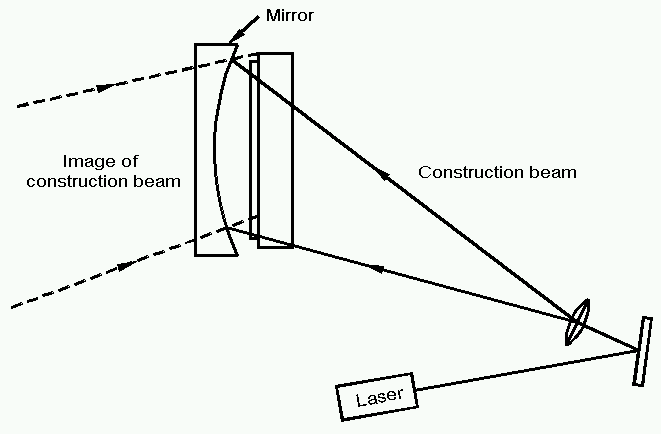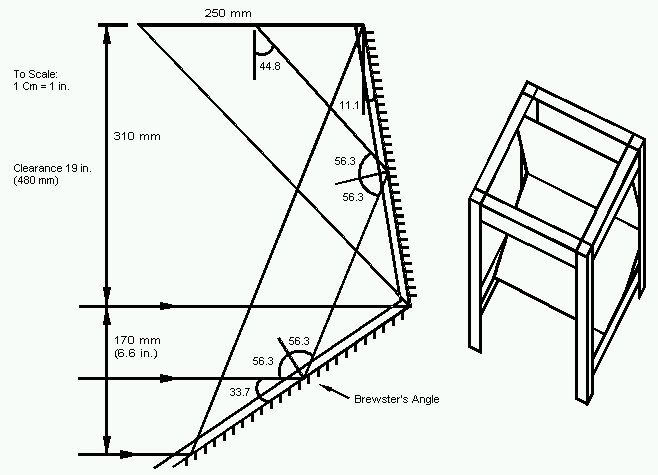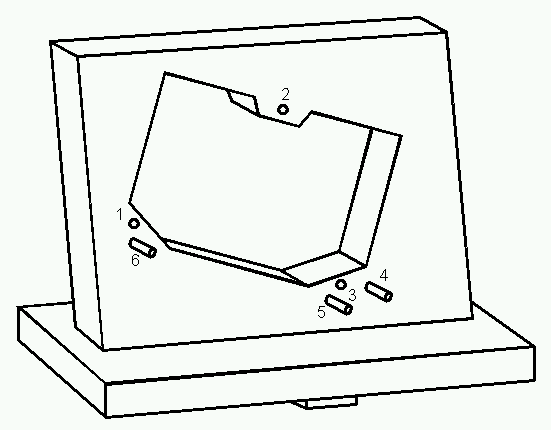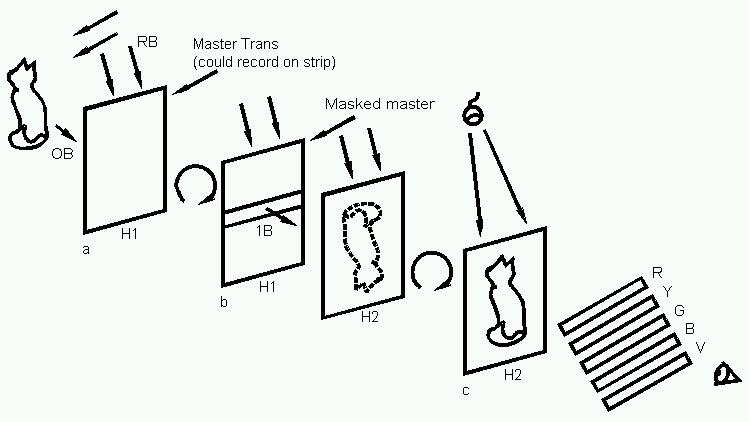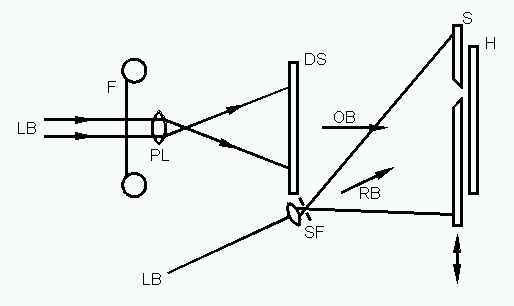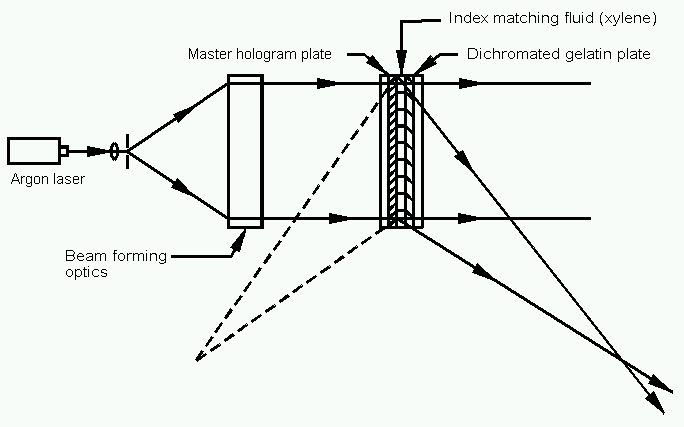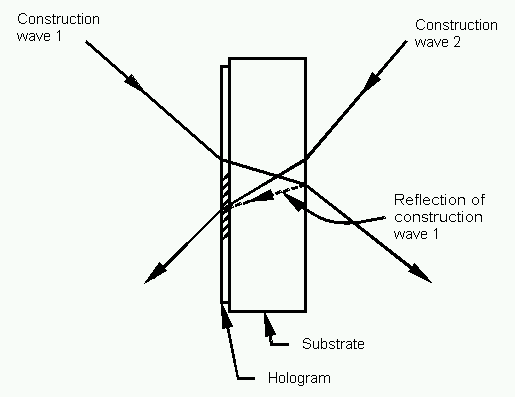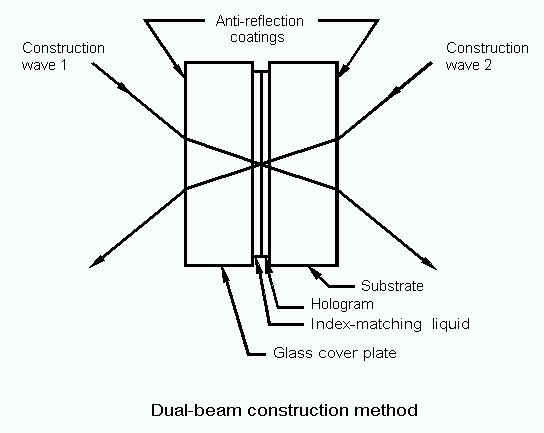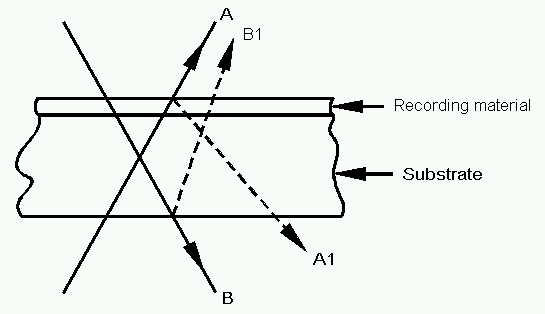HOE Tutorial
Contents
- 1 Diffractive Optics Family
- 2 What can you do with a wavefront?
- 3 Diffractive Optical Element Basic Functions
- 4 Application Examples
- 5 HUD with combiner laminated into the windshield for Volkswagon
- 6 Multi Order Super HOE Scanner
- 7 Potential Advantages Of Holographic Disk Scanners
- 8 Aberration-Corrected HOE Grating For Spectrometer
- 9 Interferometric Testing With A Computer-Generated Hologram
- 10 Spectral Filters
- 11 Colour Combination/Colour Separation
- 12 Three Beam Optical Pickup For Compact Audio Disk Player
- 13 Optical Interconnections in Microelectronics
- 14 Fiber Optic Couplers
- 15 Wavefront Sampling of High Power Laser
- 16 Wavefront Transformation System
- 17 Faceted HOEs
- 18 Directional Diffusers
- 19 Solar Applications
- 20 Wavelength Multiplexing/Demultiplexing
- 21 The Basic Optical Processor
- 22 Anti-Reflective Structures
- 23 Concept For Holographic Night Goggles
- 24 Holography
- 25 Advantages of HOE Diffraction Gratings (HOEDGs)
- 26 Single Element Dispersions Showing Hybrid Achromat Possibilities
- 27 Comparisons of Fabrication Methods Of Diffractive Optics
- 28 Direct Laser Writing
- 29 Photoresist Processes For Lithography
- 30 Spin Coating Photoresist
- 31 Replication Methods
- 32 3 Step Conversion of Volume HOE to Surface Blazed HOE
- 33 Laboratory Optical Test Apparatus
- 34 Rotating Slit Scanners (Beam Scan)
- 35 Scatterometer
- 36 Ronchi Rule -- Gaussian Spot Sise Measurement. (Lee Dickson)
- 37 An Electromagnetic Shutter From A D'Arsenual
- 38 Hologram Exposure -- Single-Beam With Nonconformal Mirror
- 39 Single Beam Frame Using All Second Surface Mirror Without Ghosts (from Saxby)
- 40 Lloyd's Mirror
- 41 Gravity plateholder (after Abramson9 For NDT Apps
- 42 Film Holder With Xylene Well (after Benton, 1960s)
- 43 Full-Aperature Transfer Hologram
- 44 Rainbow Hologram (Benton, 1965)
- 45 Holographic Stereogram, after DeBitetto, 1968-69
- 46 35 mm Holocamera by David Rowley
- 47 Contact Printing (copying) Of Transmission Or Reflection Holograms
- 48 Secondary Holograms Formed By Scattered Light In A Construction Beam
- 49 Secondary Holograms Formed By Surface Reflections
- 50 Prevention Of Secondary Holograms Formed By Surface Reflections
- 51 Spurious (secondary) Holograms
- 52 Prevention of Secondary Holograms
- 53 Michaelson Interferometer, Table Check, Fringelocker Check
- 54 Unique Characteristics Of HOEs
- 55 Requirements on Construction Optical System
- 56 Form Birefringence
Diffractive Optics Family
What can you do with a wavefront?

|

|
- Diffractive elements can be single-order or multi-order
- Patterning resolution x Area (SBWP) is a measure of absolute design freedom
- Phase encoding techniques provide the effective design freedom
- Very large SBWP can be made by combining holographic recording with computed DOEs
Diffractive Optical Element Basic Functions
Application Examples
- Beam-combiners for display systems
- Laser scanners
- Low noise and high performance diffraction gratings
- Asphere testing elements
- Spectral notch filters
- Holographic laser optical heads
- Optical interconnections in microelectronics
- Wavefront sampling
- Wavefront transformation-diffusers
- Solar concentrations
- Wavelength multiplexers/demultiplexers
- Various unique laser optical elements
HUD with combiner laminated into the windshield for Volkswagon
Multi Order Super HOE Scanner
Potential Advantages Of Holographic Disk Scanners
- Simpler optical arrangement
- Larger tolerances for wobble
- Less air turbulence
- Each facet can have a different focal length
- Lower production cost per unit
- Scan angle is independent of the number of facets
Aberration-Corrected HOE Grating For Spectrometer
Interferometric Testing With A Computer-Generated Hologram
Spectral Filters
Advantages of Holographic Spectral Filters
- Easy fabrication of large filters
- High efficiency
- Parallel layering is not a constraint
- Free from extranious passbands
Colour Combination/Colour Separation
Three Beam Optical Pickup For Compact Audio Disk Player
Optical Interconnections in Microelectronics
Fiber Optic Couplers
Wavefront Sampling of High Power Laser
Wavefront Transformation System
Faceted HOEs
Directional Diffusers
Solar Applications
Wavelength Multiplexing/Demultiplexing
The Basic Optical Processor
Anti-Reflective Structures
- As the grating period gets smaller, the diffraction angles increase
- Ultimately, gratings have only zero order transmitted and zero order reflected
- Tailoring duty cycle and etch depth one can control the power in these two remaining orders
- This is the same as an impedance match in electricity and magnetism
Concept For Holographic Night Goggles
Holography
Advantages
|
Disadvantages
|
Advantages of HOE Diffraction Gratings (HOEDGs)
| Property | Classical Gratings | HOEDGs |
|---|---|---|
| Efficiencies | 60 to 99% | 50 to 90% (surface relief only) Efficiency at blaze is lower but the efficiency curve is flatter |
| Ghosts | At best 10-5 (usually 10-2) of parent line | No ghosts at all |
| Scattered light | At best 10-5 to 10-6 at 5Å of laser line in visible | At best 10-6 to 10-8 at 5Å of laser line in visible |
| Size | In general standard sizes are limited to 8x8" | Up to Φ 17", but can be larger |
| Number of grooves | Maximum 3600 lines/mm (There are rare exceptions.) Scattered light increases drastically with density |
Up to 6000 lines/mm No increases of scatter with groove density |
| Optical power | No | Yes Volume HOEs can diffract 99% @ Bragg angle and center λ. |
Single Element Dispersions Showing Hybrid Achromat Possibilities
Comparisons of Fabrication Methods Of Diffractive Optics
| Diamond Turning | Direct-Write | Holographic or Photo-Lithography | Embossing | Injection Molding | |
|---|---|---|---|---|---|
| Practical production volumes | 100 ~ 102 | 100 ~ 102 | 100 ~ 105 | 103 ~ 105 | 103 ~ 107 |
| Initial tooling costs | low-moderate | low | moderate-high | low-moderate | high |
| Precision | low-moderate | good-excellent | excellent | moderate | moderate |
| Materials | metals, plastics | glasses, semiconductors | glasses, semiconductors | plastics | plastics |
| Volume production costs | high | high | low-moderate | low | low |
Direct Laser Writing
- Spot sizes ~1 - 5um
- Tightly Focuses, modulated He-Cd or Argon-ion laser scanned across photresists surface
- Up to 256 phase levels
- Serial Process
- Difficult to accurately transfer structure into substrate
- Direct ablation of polyimide layer on substrate using an excimer laser is also possible
- Pattern can be transferred to a VHOE by processing in a 4f optical processor.
Photoresist Processes For Lithography
Spin Coating Photoresist
Replication Methods
3 Step Conversion of Volume HOE to Surface Blazed HOE
Laboratory Optical Test Apparatus
Rotating Slit Scanners (Beam Scan)
- Narrow, rotating slit is scanned through pattern
- Measure irradiance profiles with ~micron lateral precision
- Slit widths down to 1 um
- Scan areas over 10 mm are possible
- Measurement of both near and far-field diffraction patterns
- Both 1-D and 2-D scans can be performed
Scatterometer
- Measures irradiance patterns from DOE's by scanning a detector and pinhole
- Scanning and data acquisition is computer controlled (LabView™ software)
- Precision depends on pinhole size and step-size of motorized stage
- Slow process
- Can be difficult to align scan axis
Ronchi Rule -- Gaussian Spot Sise Measurement. (Lee Dickson)
- do = 1/e2 spot
- w = bar width
- K = pmin/pmax
- do/w = 2.2K + 1
Side view of ruling in beam
An Electromagnetic Shutter From A D'Arsenual
Shutter is silent and can easily be configured to close after accumulating a preset energy per unit area.
Hologram Exposure -- Single-Beam With Nonconformal Mirror
Introduced by Yuri M. Denisyuk in early 1960s.
Single Beam Frame Using All Second Surface Mirror Without Ghosts (from Saxby)
Lloyd's Mirror
Gravity plateholder (after Abramson9 For NDT Apps
Film Holder With Xylene Well (after Benton, 1960s)
Full-Aperature Transfer Hologram
Rainbow Hologram (Benton, 1965)
Holographic Stereogram, after DeBitetto, 1968-69
35 mm Holocamera by David Rowley
Contact Printing (copying) Of Transmission Or Reflection Holograms
Secondary Holograms Formed By Scattered Light In A Construction Beam
Any stray or scattered light can combine with a construction beam to form secondary transmission and reflections holograms
Secondary Holograms Formed By Surface Reflections
The reflection portion of construction wave 1 combines with construction wave 2 to form a Transmission hologram
Prevention Of Secondary Holograms Formed By Surface Reflections
Spurious (secondary) Holograms
- Desired hologram:
- Reflection hologram AB
- Spurious holograms:
- Reflection hologram AA1
- Reflection hologram BB1
- Reflection hologram A1B1
- Transmission hologram AB1
- Transmission hologram A1B
Prevention of Secondary Holograms
Michaelson Interferometer, Table Check, Fringelocker Check
Unique Characteristics Of HOEs
- Perfect imaging between two points for a single wavelength
- Useful in unusual (I.E., not in-line) geometries
- Shape independent (I.E., flat surfaces can have optical power)
- Extremely dispersive (effice v-number of -3.45)
- Angle selection
- Wavelength selective
- Multiple functions
- Multiple elements in the same aperture
- Compact and light weight
- Relatively inexpensive - low cost "photographic" replication
Requirements on Construction Optical System
- Hight quality optical elements
- Minimize multiple reflections between surfaces of construction optics and hologram substrate
- Scattered light should be prevented from falling on hologram plate
- Mechanical and thermal stability during exposure
- Proper coherence length
- Polarization of two recording beams should be maintained properly
- Active fringe stabilization system for long exposures
Form Birefringence
- Subwavelength gratings behave somewhat like biaxial crystals
- As the period gets small relative to the wavelength, we can calculate an equivalent dielectric constant or index of refraction (n)
Last modified on 7/21/99
